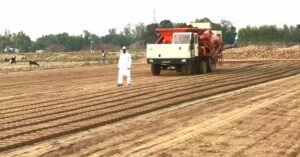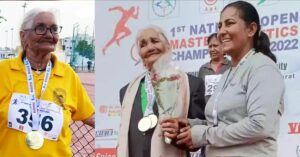Uncovering the Indus Valley ‘Couple’: Here’s What They Reveal About Our Ancestors
“The man was about 35 years old and the woman, about 22 years old when they were buried. We saw no signs of lesion or injury on either of the skeletons, which led us to conclude that they died of natural causes and were not killed—at least violently.”

Graves and ancient remains have always been of great interest to history buffs, archaeologists and researchers. After all, these are windows of opportunities for them to know how our ancestors lived.
Recently, archaeologists and scientists from Pune and South Korea discovered a grave, about 500 cm deep, with the skeletal remains of a young man and woman at the Harappan settlement in Rakhigarhi, Haryana.
This development promises to open new avenues in the study of social life in the Indus Valley.
The researchers were from the Deccan College, a Deemed University in Pune, and the Institute of Forensic Science and the National University College of Medicine in Seoul, South Korea.
As the skeletons were found lying face up with their arms extended, researchers claim that they were a couple and were buried in a joint grave around 4500 years ago.

Speaking to The Better India, Dr Vasant Shinde, the Vice Chancellor of Deccan University and the head of the research group that studied this grave said, “The man was about 35 years old and the woman, about 22 years old when they were buried. We saw no signs of lesion or injury on either of the skeletons, which led us to conclude that they died of natural causes and were not killed—at least violently.”
The man was about 5 feet 6 inches tall while the woman’s height was 5 feet 2 inches, according to the scientists and both were “quite healthy” at the time of their death.
Explaining the funeral customs, Shinde informed TBI, “The Harappans were usually buried in cemeteries located 1 km away from their settlements. There were three types of burials. In the primary burial, the dead body was placed immediately in a pit, while in the secondary type, the dead body was kept open for some days, and later, the bones were collected and buried in a pit. The last type was the symbolic burial, which was possibly conducted when the dead body could not be retrieved. In all types of burial, goods in the form of pots, jewellery, weapons, etc. have found. The Harappans may have believed in second life, and hence all these things were placed next to the dead.”
A lack of lesions, lines and “abnormal thickness” of the skulls negates the possibility of brain fever in the two people and led the scientists to conclude that they were healthy when they died.
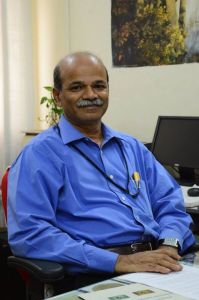
This grave is the first anthropologically confirmed joint burial of a couple found in the Indus Valley civilisation remains.
While a joint burial was earlier discovered in Lothal, Gujarat, the skeletons were found to be buried on top of one another, leading researchers to conclude that the two individuals were buried at the same place, but at different times.
Some archaeologists said that the female skeleton, found on top, had injury marks. One hypothesis states that the woman killed herself after the man passed away.
However, another research contradicts this claim and says that determining the sexes of these skeletons itself, is difficult.
This new discovery is not as complicated as the one in Gujarat.
Explaining how the sex of these skeletons was studied, Shinde told Times Now, “A narrow greater sciatic notch and the absence of a preauricular sulcus is indicative of the male anatomy, and a wider greater sciatic notch and the presence of a preauricular sulcus is that of a female. More such features during the analysis helped us determine the sex of each skeleton. Detailed examination of the bones revealed that the two ‘died almost at the same time.'”
Speaking to TBI, Shinde said,
“The grave was discovered in the burial grounds and not on the outskirts of the city. This indicates that the society did not condemn the relationship of these two individuals.
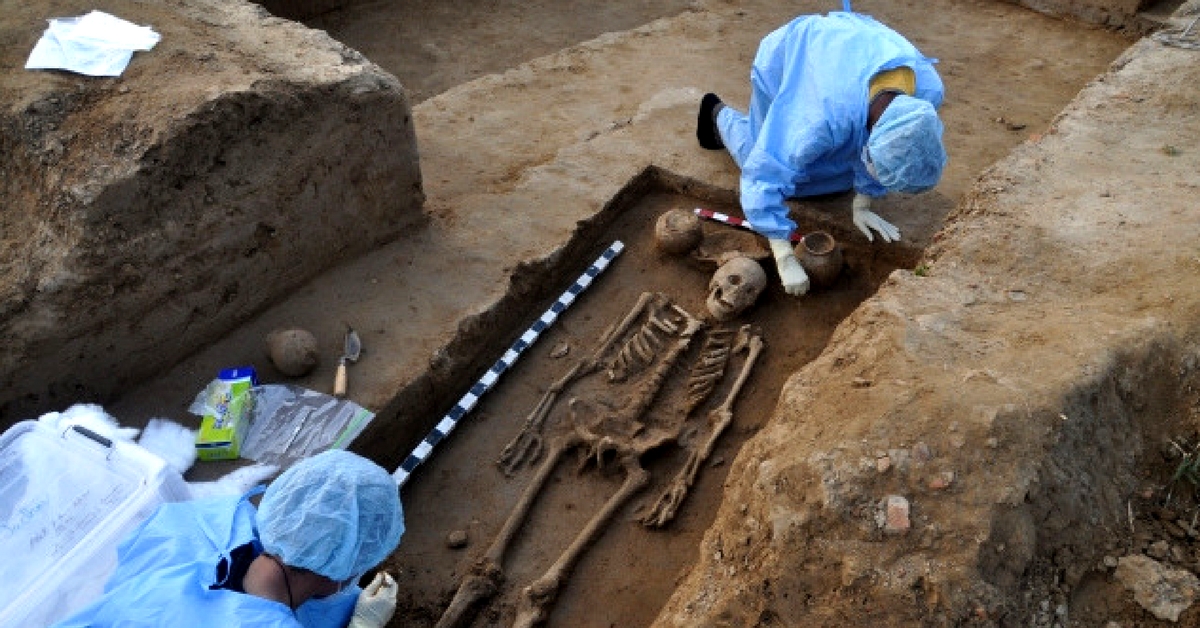
Moreover, if it were an instance of honour killing or deaths from such disapproval, there’s a very slim possibility of the two getting buried together. There were absolutely no injury marks on either of the skeletons, and this too supports the theory that the two died naturally and were not killed.”
He further explained that these observations have led the archaeologists to propose the hypothesis that the two were a couple—possibly even married. But, he stresses, that this is merely a hypothesis as of now.
“The man and the woman were facing each other in a very intimate way. We believe they were a couple. And they seemed to have died at the same time. How they died, however, remains a mystery,” he informed the BBC.
This grave also sheds some light on the beliefs of the Harappans.
For instance, along with the skeletons, earthen pots were also discovered near them. A banded agate bead was found near the right collar bone of the woman.
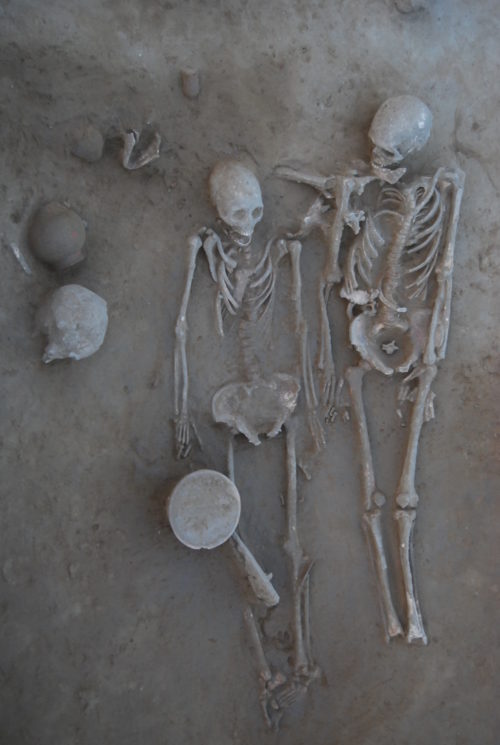
“The pots may have contained food and water for the dead, a custom probably fuelled by the belief that the dead may need them after death,” Shinde told Times Now.
The investigation began in 2016 when the “very rare” skeletons were found, and it took the researchers about two years to come to these conclusions.
Although the burial does not prove anything about the marital beliefs of our ancestors living in the Indus Valley, it certainly throws up questions about the social beliefs that prevailed in those times.
Perhaps with more research and discoveries, we might be able to understand more about what they thought of intersex relationships, marriage etc.
(Edited by Gayatri Mishra)
Feature image courtesy: Neelesh Jadhao.
Like this story? Or have something to share? Write to us: [email protected], or connect with us on Facebook and Twitter.
This story made me
- 97
- 121
- 89
- 167
Tell Us More
We bring stories straight from the heart of India, to inspire millions and create a wave of impact. Our positive movement is growing bigger everyday, and we would love for you to join it.
Please contribute whatever you can, every little penny helps our team in bringing you more stories that support dreams and spread hope.







